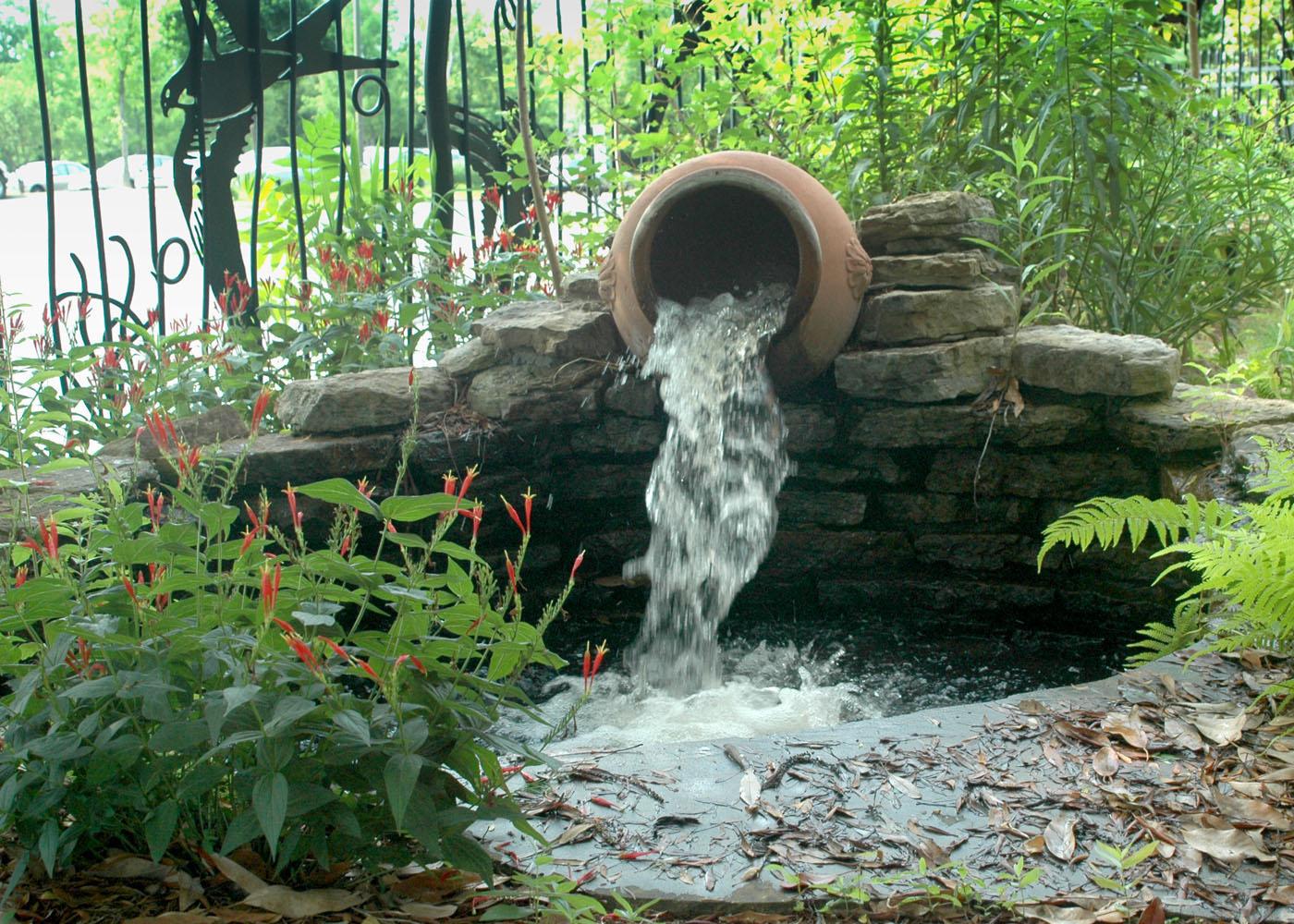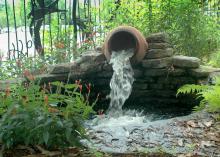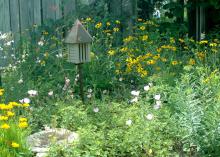Information Possibly Outdated
The information presented on this page was originally released on June 7, 2012. It may not be outdated, but please search our site for more current information. If you plan to quote or reference this information in a publication, please check with the Extension specialist or author before proceeding.
Wildlife habitats easy to achieve in city
JACKSON – City dwellers do not have to move to the country to enjoy colorful birds, butterflies and other wild animals if they build a backyard wildlife habitat.
“The No. 1 reason people consider a backyard wildlife habitat is for the enjoyment they get from watching wildlife,” said Ty Jones, Madison County director with Mississippi State University’s Extension Service. “But in metropolitan areas, wildlife-friendly landscapes also give animals small pockets of refuge.”
Suburban homeowners will likely find it challenging to attract multiple species of wildlife in a limited amount of space.
“There would have to be more of a community effort in a neighborhood where yards are smaller,” Jones said. “The more neighbors who are on board, the more effective a larger habitat will be.”
But if a neighborhood-wide effort is not feasible, individual homeowners can incorporate plants and other items that will attract the species they most want to observe.
“The process of building a backyard habitat is simple and can be achieved even in a small yard or patio,” said Adam Rohnke, wildlife and fisheries associate with MSU’s Extension Service.
Providing the basic necessities -- food, water and shelter -- is all it takes to establish a backyard wildlife habitat. The first step is to decide which wildlife will be attracted to the backyard. Second, take an inventory of any existing landscaping to determine what should be added or replaced to provide adequate food, water and shelter for the desired species. Next, draw a plan.
“Be sure to consider what other activities take place in the yard,” Rohnke said. “Do kids and pets play in the yard? There’s nothing worse than being a kid and not being able to kick the ball because of mom’s flowerpots. Do the research first and begin slowly, by starting with a small area.”
Putting up a bird feeder and providing a birdbath near adequate cover is a simple way to start attracting birds. A butterfly house and a few nectar-rich shrubs can be added in a small space.
Rohnke said one caution is backyard wildlife habitats attract more than the target species.
“Wildlife is supposed to be wild, and it can be dangerous, so think before acting,” Rohnke said. “Animals that are attracted unintentionally, such as snakes, are usually an important part of the habitat and make positive contributions. But occasionally nuisance animals show up, such as raccoons. They could carry diseases, posing a threat to the safety and health of humans. Be prepared to deal with those.”
Rohnke said it is best to try and live with the presence of beneficial species, such as snakes. However, if the animal needs to be removed, seek professional help for the safety of all involved, he said.
The presence of these critters means that efforts to create the habitat are successful.
“Consider it a goal and a reward to witness the food chain in action,” Rohnke said. “If a bird gets eaten by a hawk, that’s when you know you’ve created good wildlife habitat.”
Wildlife habitats also have other benefits that might not be so obvious.
“The right landscaping can add 3 to 10 percent to the value of a home. And adding a trellis with a vine to the correct side of the house can help save on utility bills,” said Rohnke. “Homeowners have many choices of plants that can provide these benefits as well as offer the necessary elements to attract animals.”










